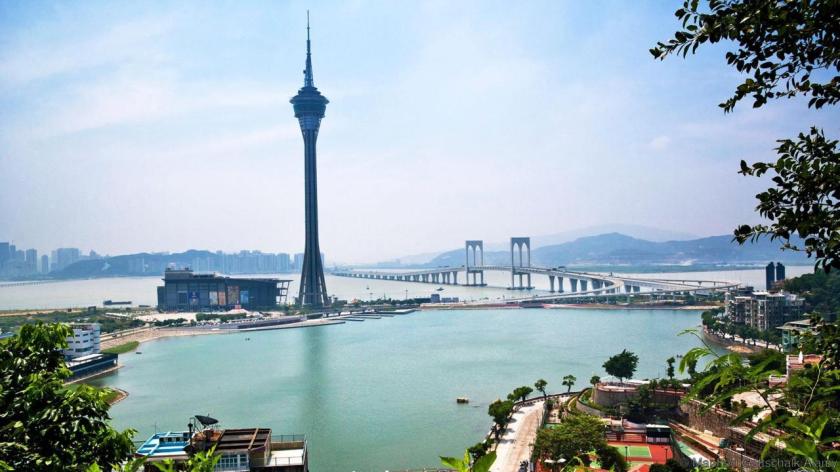
Brian Lo
Macau; literally means “Bay Gate” (in Portuguese, which is widely mentioned or referred in the city) besides Macau could be spelled Macao (in English), officially the Macao Special Administrative Region of the People’s Republic of China is well-known for its developed Casino industry (Xi & Wei 2010). Other than that due to its own special and unique culture and history, appealing recreation and entertainments, Macau has turned into a popular tourist destination (Zhang 2012). However, Macau was unbefitting to become a world-famous tourism destination before one-thousandth anniversary. In general assumption many people assume that Macau has been unattractive in contrast to its close neighbour, peripheral the Pearl of the Orient – Hong Kong (Ung & Vong 2010). According to Rooke (Ung & Vong 2010), described Macau as a ‘sleep little back water near Hong Kong’ and additionally Ngai (1999) stated that “even in the mainland, people are more familiar with Hong Kong” (Ngai 1999), and used to combine Hong Kong and Macau together as one which labeled as “Kong Ou”. This indicated that at that period of time Macau was insignificant and imperceptible.
Nevertheless, in 2002, the Macau government has loosen the restrictions of its gambling industry, which has changed the development of Macau and leaded it to a different direction; as a world-class gambling casino industry (Xi & Wei 2010). Furthermore, Macau offered and contributed to the world history as a “bridge” (Ngai 1999 and South China Morning Post 2002), by presenting two different civilization and cultures (the junction of Portuguese and Chinese culture). These multi-sensory experiences of aesthetic, history, architectural, religion(s) from the two-contrastive/ divergent regions, allow to add eventually improvise new aspects to Macau and strengthen in representing its own unique cultural history, identity and heritage.
In regards to the term “heritage”, Dr Ien Ang (Ang 2001) has mentioned that the interpretation or definition of heritage is still debatable and undetermined. Heritage is more than what the general desire to preserve and save from the past, it is an invaluable property that “can be ‘built’ and ‘created’ out of a critical and creative engagement with the myriad intertwining histories,” (Ang 2001). The contemporary meaning of heritage can be differed from various perspectives, however it is more about how every individual did value and cherish the past and how could heritage and culture implement to the community at the present time or even in the future.

The Cathedral of Saint Paul (São Paulo) would be one of the iconic design initiative and cultural heritage of Macau that influences the harmonization to develop and enhance Macau’s distinct cultural identity and social status within the world. The Ruins of St. Paul is the site of St. Paul Church and built from the 1602 to 1640 by the Jesuit. Other than that, this church was adjoined with the Jesuit College of St Paul, which was the first Western-style university in the Far East during that time (Ngai 1999). This remarkable architecture has become a significant medium to encourage the religious and cultural exchanges between Europe and China. Visitors or tourists would able to experience the harmonization of Chinese and Portuguese spatial concepts which evident and demonstrate in this unique building; the St. Paul’s Ruins.
This significant construction not just only convey the importance of the coexistence of cultural sediments of eastern and western origin, beside this also motivates the influence to enhance the perspective of the public general, and ultimately provide them to physically experience the unique and individual practices from Macau. This design initiative ensures and at the same time challenges the development and transformation of Macau, particularly in regarding to the aspects of colonialism and capitalism (China) within the past five centuries. Nowadays, Macau has eventually become a “multi-racial” and “multi-cultural” society (Ngai 1999) and also become the major gateway of economic within Mainland China and South East Asia and Europe.
Reference:
Ang, L. 2001, ‘Intertwining histories: heritage and diversity’, The Annual History Lecture History Council of New South Wales, lecture notes, History Council of NSW, Sydney, viewed 19 January 2017.
Hao, Z. 2011, Macau: history and society, Hong Kong University Press, Hong Kong.
Jarosz, A. 2013, ‘Macau beyond the roulette wheel’, BBC, 19 September, viewed 18 January 2017, <http://www.bbc.com/travel/story/20130724-macau-beyond-the-roulette-wheel>.
Ngai, G. 1999, ‘Cultural heritage traditional bonds hold key to identity’, South China Morning Post Ltd., 19 December.
South China Morning Post 2002, ‘Recognise macau’s Portuguese heritage or lose it’, South China Morning Post Ltd., 27 September, p. 19.
Springer, K. 2015, ‘A 400-year-old-port – with no boats’, BBC, 12 November, viewed 18 January 2017, <http://www.bbc.com/travel/story/20151110-preserving-macaus-seafaring-soul>.
The State of Administration of Cultural Heritage of the People’s of Republic of China 2005, The Historic Monuments of Macao, viewed 19 January 2017, .
UNESCO World Heritage Center 2017, Historic center of Macao, viewed 19 January 2017, <http://whc.unesco.org/en/list/1110>.
Ung, A. & Vong, T.N. 2010, ‘Tourist experience of heritage tourism in macau sar, china’, Journal of Heritage Tourism, vol. 5, no. 2, pp. 157-168.
Xi, L. & Wei, C.S. 2010, ‘The way to the diversification of macau’s social economy: a study on macau’s cultural tourism development’, International Journal of Trade, Economics and Finance, vol. 1, no. 2, pp. 131-135.
Zhang, M. 2012, ‘Reading different cultures through cultural translation’, John Benjamins Publishing Company, vol. 58, no. 2, pp. 205-219.